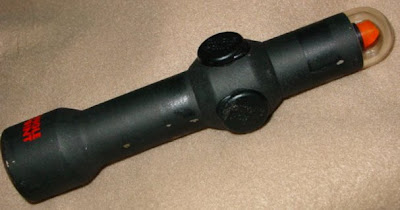Shooting To Live
A short review of Shooting To Live With The One Hand Gun, by W.E. Fairbairn and E.A. Sykes
Though it was published in 1942, there is a great deal in this book that is still of relevance to the practical shooter. Parts of it contain the earliest treatments in print of some pistolcraft concepts that are in use today. It was written by W.E. Fairbairn and E.A.Sykes. Many will recognize their names. They taught close quarters combat to British and American commandos and clandestine operations units, in the Second World War. They taught a collection of oriental-flavored martial arts techniques summed up in the book Get Tough, the use of the famed Fairbairn-Sykes fighting knife, and other alarming skills.
The two learned their trade, pre-war, in the Shanghai Municipal Police, fighting vicious criminal gangs in a notably dangerous place and time. They discovered, by examining departmental records, that most police gunfights happened at very short range, often in poor light, and very suddenly. These conclusions still hold up today, and do so for police departments anywhere. This was the beginning of officer safety and survival as a matter of analysis not anecdote.
They devised a training program for the pistol that emphasized fast, close shooting and tested the training in "fun house" matches with pop-up and moving targets. Shooting To Live
Now, there are those who insist you must always use the sights, but Fairbairn and Sykes were looking for hits just anywhere on a human-sized target at a typical firing distance of four yards. And they wanted hits as fast as possible. They thought using both hands and aiming with the sights was a good plan from ten yards on out. Many people overlook that in debating sights versus Fairbairn and Sykes' coarse visual alignment of the whole gun. Even the authors thought using two hands and the sights was the right solution to some shooting problems.
Fairbairn and Sykes recommend the automatic pistol as better than the revolver, for police use, years before this view became fashionable. They disliked manual safety catches, though, and pinned the thumb safeties of the Shanghai Police's 1911 Colts permanently in the "fire" position. They objected to "the fumbling and uncertainty inherent in the use of the safety-catch." The idea was you carried the gun with its chamber empty and jacked the slide when you needed to charge the weapon--but not before. When the episode was over you emptied the chamber again. Today I'm sure they would pick some DAO pistol that is safe to carry fully charged up, and ready to fire without releasing a safety.
The book has its dated and peculiar elements, of course. The business of carrying the chamber sans cartridge is just one of them. The authors are impressed with the atrocious "Fitz Colt" revolver conversion (with no trigger guard), for example. They recommend the double barrel shotgun, "sawn-off," as they say, for home defense. A pump gun would suit most people better. In other ways they were ahead of their times, mounting African express type sights on their 1911 pistols, something that did not catch on until many years later. The book is quaintly written in an engaging if old fashioned style, carefully exact in its language and sometimes touched with understated humor. Even if you are fully a proponent of sighted fire and the Modern Technique
on their 1911 pistols, something that did not catch on until many years later. The book is quaintly written in an engaging if old fashioned style, carefully exact in its language and sometimes touched with understated humor. Even if you are fully a proponent of sighted fire and the Modern Technique , I dare you not to learn something.
, I dare you not to learn something.




Comments
Post a Comment